Gardening is a rewarding activity that brings joy, fresh produce, and a sense of accomplishment. One of the most satisfying vegetables to grow is the humble carrot. Carrots are versatile root vegetables that are easy to cultivate and incredibly nutritious.
In this article, I’ll share my insights on the benefits of growing carrots, some of my favorite varieties, and how you can successfully nurture them in your garden.
Benefits of Growing Carrots
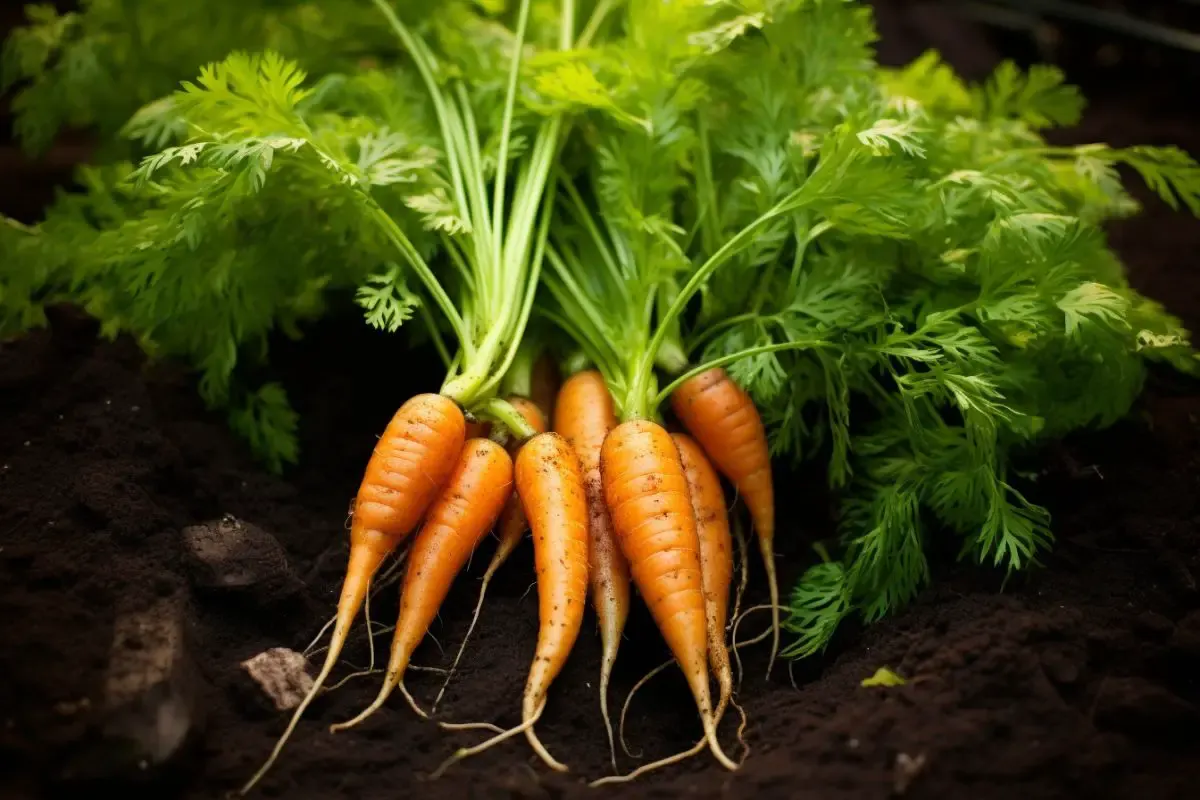
Carrots are not only a tasty addition to your meals, but they also bring a host of benefits to your garden. Here are three of the top perks:
1. Nutritional Powerhouse
Carrots are packed with essential nutrients including beta-carotene, which our bodies convert to vitamin A, fiber, vitamin K, and antioxidants. Growing your own ensures you have a fresh and nutritious supply right at your fingertips.
2. Easy to Grow
One of the great things about carrots is that they are relatively easy to grow. They can tolerate a bit of shade and don’t require a lot of space, making them a perfect choice for beginners or those with smaller gardens. Plus, they can be grown in containers if ground space is limited.
3. Soil Improvement
Carrots have long taproots that can help to break up compacted soil, improving its structure and making it easier for other plants to grow. Additionally, they can help to bring nutrients up from deeper in the soil, making them available to other plants in your garden.
My Favorite Carrot Varieties
Over the years, I’ve had the chance to grow several varieties of carrots, and I’ve found that each has its own unique flavor and best use.
Here are three of my favorites:
1. Nantes
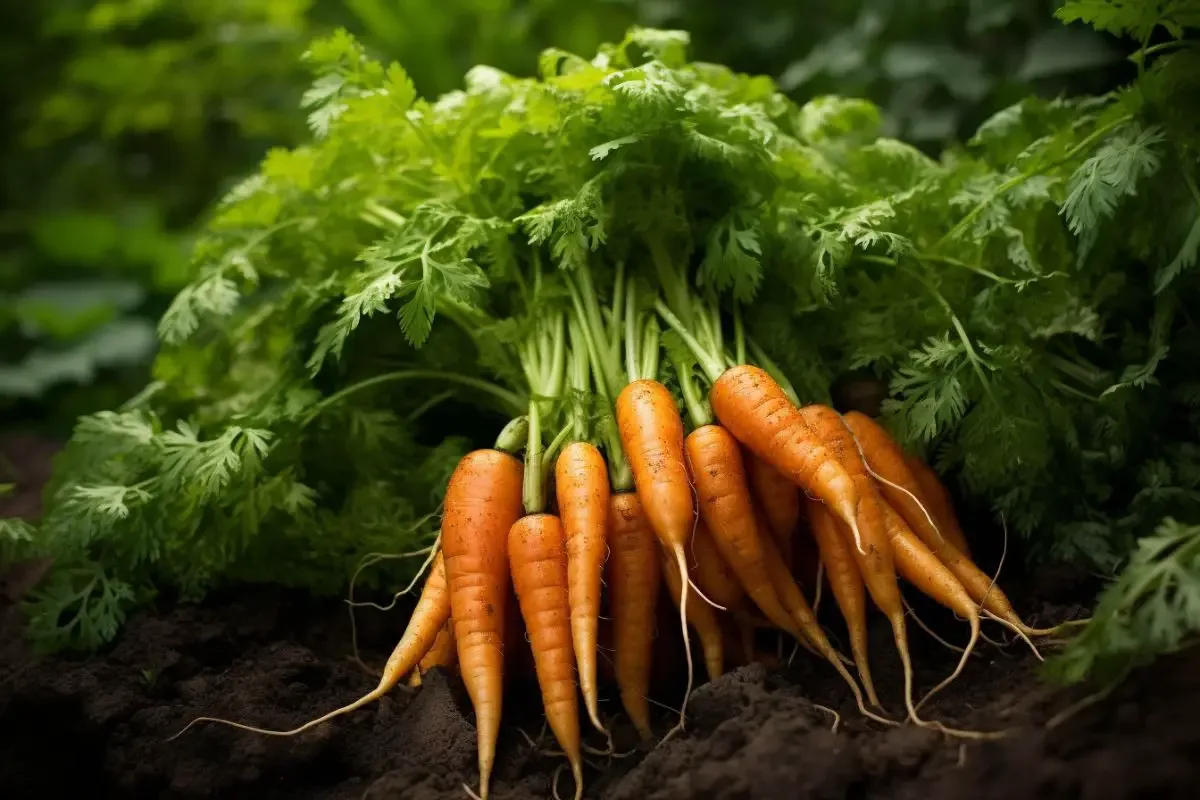
The ‘Nantes’ carrot is a classic variety that is known for its sweet flavor and crisp texture. It’s a great all-purpose carrot that is perfect for snacking, cooking, or juicing. The ‘Nantes’ carrot is also relatively easy to grow and does well in a variety of soil types.
2. Imperator
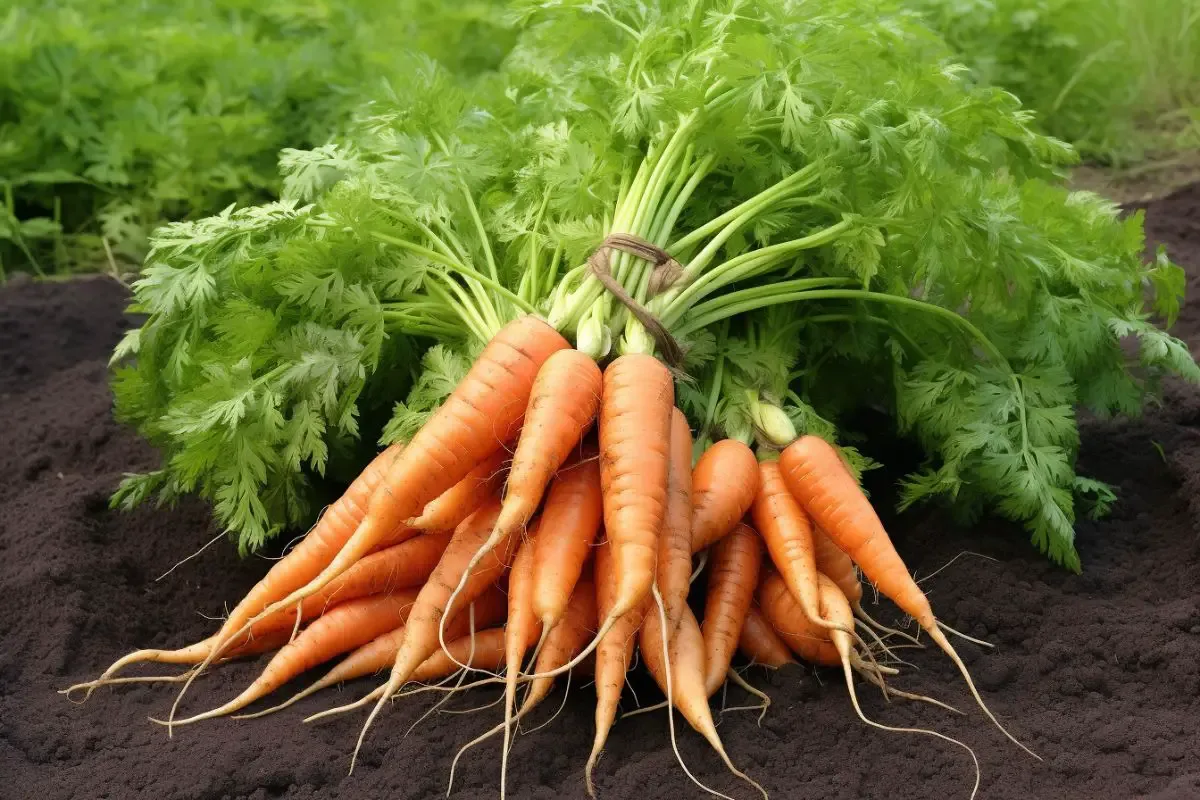
The ‘Imperator’ carrot is a long, slender variety that is often found in grocery stores. It has a sweet, rich flavor and a tender texture. ‘Imperator’ carrots are best used for fresh eating or in recipes where the carrot is the star, such as glazed carrots or carrot soup.
3. Parisian
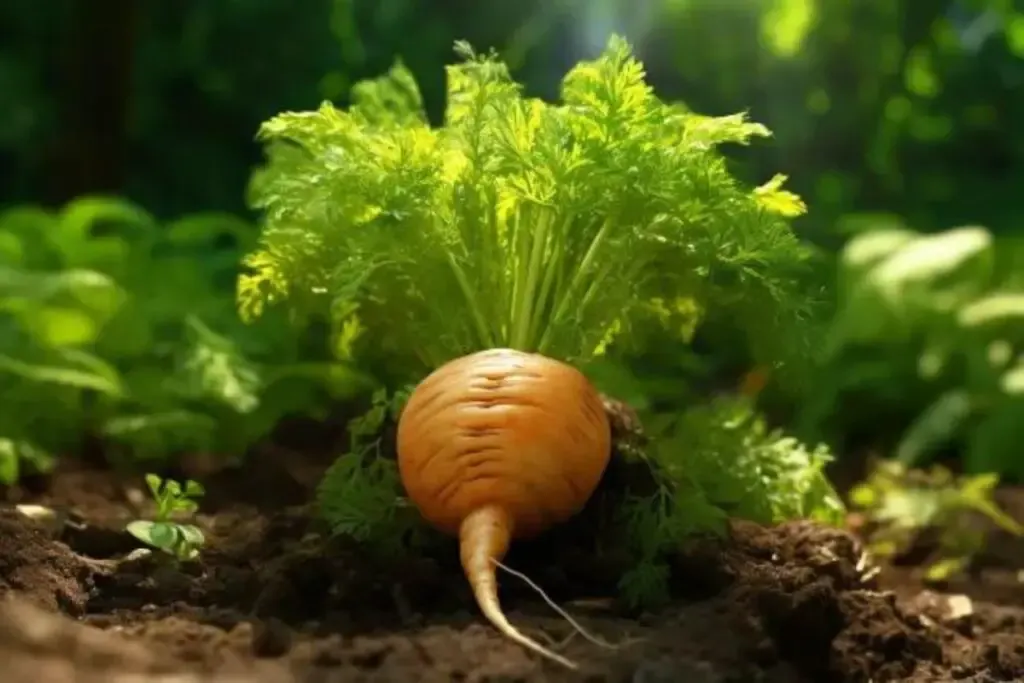
The ‘Parisian’ carrot is a small, round variety that is perfect for growing in containers or in heavy, clay soils where longer carrots might struggle. They have a sweet, mild flavor and a tender texture. ‘Parisian’ carrots are best used fresh in salads or as a crunchy snack.
Carrot Care
Carrots are a rewarding crop to grow, but like any plant, they have specific needs that must be met for them to thrive.
Here’s a comprehensive guide on how to provide the best care for your carrot plants.
Planting
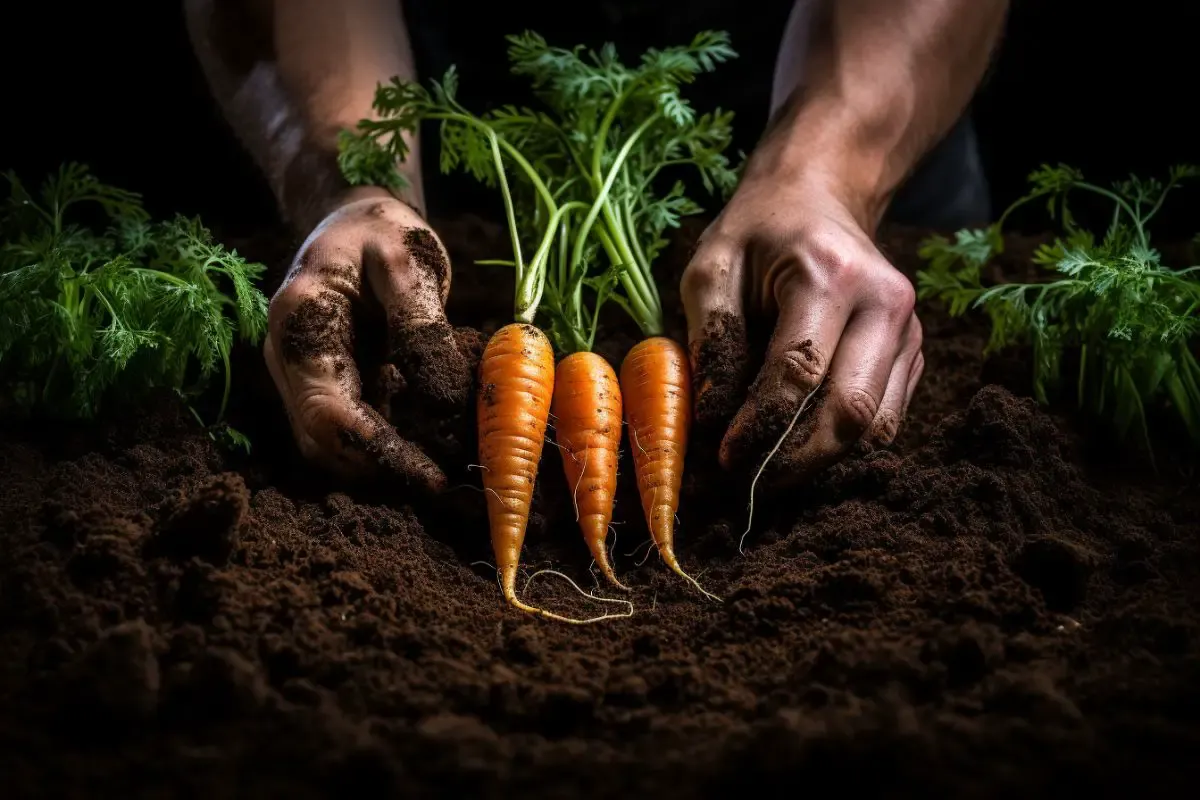
Carrots are best planted directly in the garden, as they do not transplant well. Sow the seeds ¼ inch deep and space them about 2-3 inches apart in rows that are at least 12 inches apart. Make sure to plant them in a location where they will receive full sun for the majority of the day.
Carrots prefer well-draining soil and will struggle in heavy, compacted clay soils. If your soil is less than ideal, consider growing shorter varieties like ‘Parisian’, or use raised beds filled with a loose, sandy soil mix.
Water the seeds well after planting and keep the soil consistently moist until the seeds germinate, which typically takes about 14-21 days. Once the seedlings are a few inches tall, thin them out so that they are spaced about 3-4 inches apart. This gives the carrots enough room to grow and prevents them from becoming misshapen.
Light
Carrots need a full sun location, which means they should receive at least 6-8 hours of direct sunlight each day. If you’re planting in an area with partial shade, the carrots will still grow, but they may take longer to mature and might not be as sweet.
Soil
A loose, well-draining soil is key for growing carrots. They prefer a pH between 6.0 and 6.8, and soil that is rich in organic matter. If your soil is heavy or compacted, consider adding compost or sand to improve its structure. Avoid using fresh manure, as this can cause the carrots to become forked and misshapen.
Water
Carrots require consistent moisture, especially during the germination and seedling stages. Aim to provide about 1 inch of water per week, either through rainfall or irrigation.
Once the carrots have been established, they can tolerate short periods of drought, but for the sweetest flavor, it’s best to keep the soil consistently moist.
Temperature and Humidity
Carrots are a cool-season crop and can tolerate frost. They prefer temperatures between 60-75°F but can survive temperatures as low as 40°F. If you live in a hot climate, consider planting carrots in the fall or early spring when temperatures are cooler.
Carrots do not require high humidity and can tolerate dry air. However, in very dry conditions, it’s important to ensure that they receive enough water to compensate.
Fertilizer
Carrots do not require a lot of fertilizer, and too much can lead to poor-quality roots. If your soil is rich in organic matter, you may not need to fertilize at all. If you do choose to fertilize, use a low-nitrogen, high-phosphorus fertilizer to promote root development.
Harvesting Carrots
Harvesting carrots is one of the most satisfying parts of growing this vegetable. Carrots are typically ready to harvest 50-75 days after planting, depending on the variety. The tops of the carrot roots will be visible at the soil surface, and you can gauge their size by checking the diameter of the root.
To harvest, gently loosen the soil around the carrot with a garden fork or your hands, and then pull the carrot out of the ground. Be careful not to pull too hard, as this can cause the carrot to break. If you find that the carrots are difficult to pull out, you can water the area to help loosen the soil.
After harvesting, remove the greens right away, as they can draw moisture from the root, causing it to become limp. Carrots can be stored in the refrigerator for several weeks.
Pruning
Carrots do not require pruning in the traditional sense, but thinning the seedlings is an important step in the growing process.
When the carrot seedlings are a few inches tall, thin them out so that they are spaced about 3-4 inches apart. This gives the carrots enough room to grow and prevents them from becoming misshapen.
Propagating
Carrots are typically grown from seed and do not propagate well from cuttings or other methods. However, you can save seeds from a carrot plant that has been allowed to flower and set seed, although this process is more complex and time-consuming than simply buying new seeds.
How to Grow Carrots From Seed
Growing carrots from seed is a straightforward process. Sow the seeds directly in the garden, ¼ inch deep, and spaced 2-3 inches apart in rows that are at least 12 inches apart. Water the seeds well after planting and keep the soil consistently moist until the seeds germinate, which typically takes about 14-21 days.
Once the seedlings are a few inches tall, thin them out to give them enough room to grow. Carrots prefer a sunny location and loose, well-draining soil. They require consistent moisture and can tolerate cool temperatures.
Growing in Pots
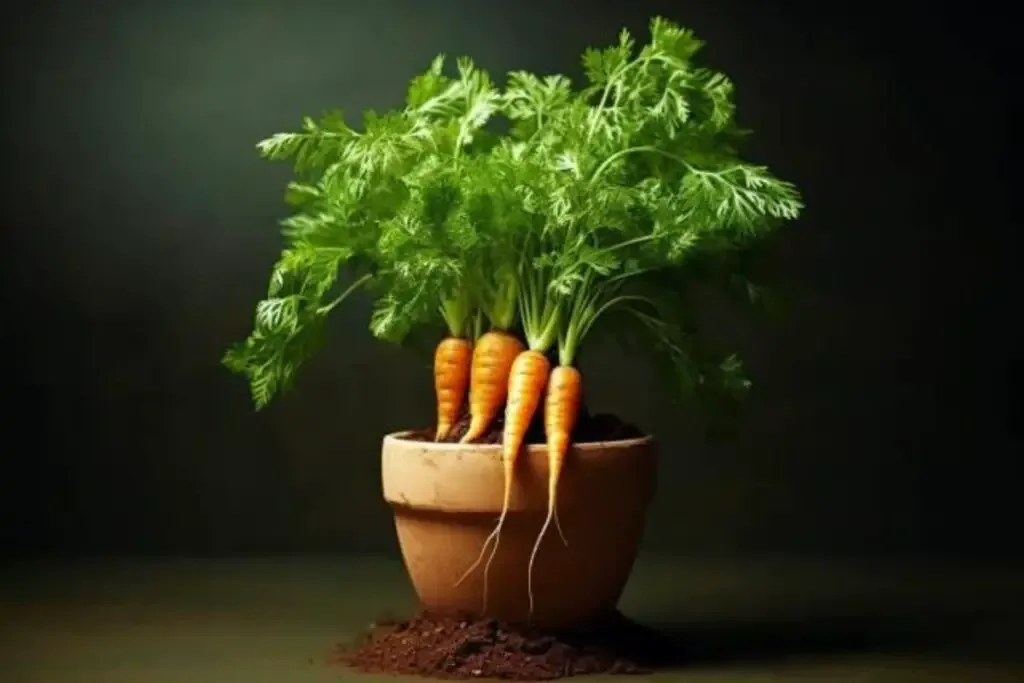
Carrots can also be grown in pots, making them a great option for those with limited garden space. Choose a deep pot to accommodate the carrot’s long roots, and fill it with a loose, well-draining soil mix.
Sow the seeds directly in the pot, following the same planting depth and spacing guidelines as for garden planting. Water the seeds well and keep the soil consistently moist.
Growing carrots in pots requires a bit more attention, particularly to watering, as pots can dry out quickly. However, with the right care, you can enjoy a harvest of fresh carrots from your patio or balcony.
Overwintering
Carrots are a hardy vegetable and can tolerate frost, making them an excellent candidate for overwintering in the garden. To overwinter carrots, you’ll want to add a thick layer of mulch, such as straw or leaves, over the carrot bed once the ground starts to freeze. This insulates the soil, preventing it from freezing completely and allowing you to harvest carrots throughout the winter.
If you live in an area with severe winters, you might want to consider harvesting your carrots in late fall and storing them in a cool, dark place, like a root cellar, where they can last several months. Alternatively, you can store carrots in the refrigerator, where they’ll stay crisp for several weeks.
Transplanting
Carrots are generally direct-seeded and do not transplant well due to their long taproots. Transplanting can cause the roots to become misshapen or stunted. If you must start your carrots indoors, use biodegradable pots that can be planted directly into the ground to minimize root disturbance.
When transplanting, make sure to space the carrots at least 3-4 inches apart and water them well. It’s important to transplant carrots while they are still small to reduce the risk of transplant shock.
Common Pests & Diseases
Carrots are susceptible to a few common pests and diseases, including carrot rust flies, aphids, and leafhoppers. Their rust flies lay their eggs in the soil near the carrot tops, and the larvae burrow into the roots, causing damage. To prevent infestations, use floating row covers or plant carrot varieties that are resistant to rust flies.
Aphids and leafhoppers can also be a problem, sucking sap from the plants and potentially spreading diseases. These pests can be controlled with insecticidal soap or by introducing beneficial insects, such as ladybugs, that feed on them.
Carrots can also be affected by diseases such as powdery mildew and Alternaria leaf blight. To prevent these diseases, ensure good air circulation around your plants and practice crop rotation. If diseases do appear, they can be treated with fungicides.
By being vigilant and taking preventive measures, you can keep pests and diseases at bay and ensure a healthy, productive carrot crop.
Happy gardening!

